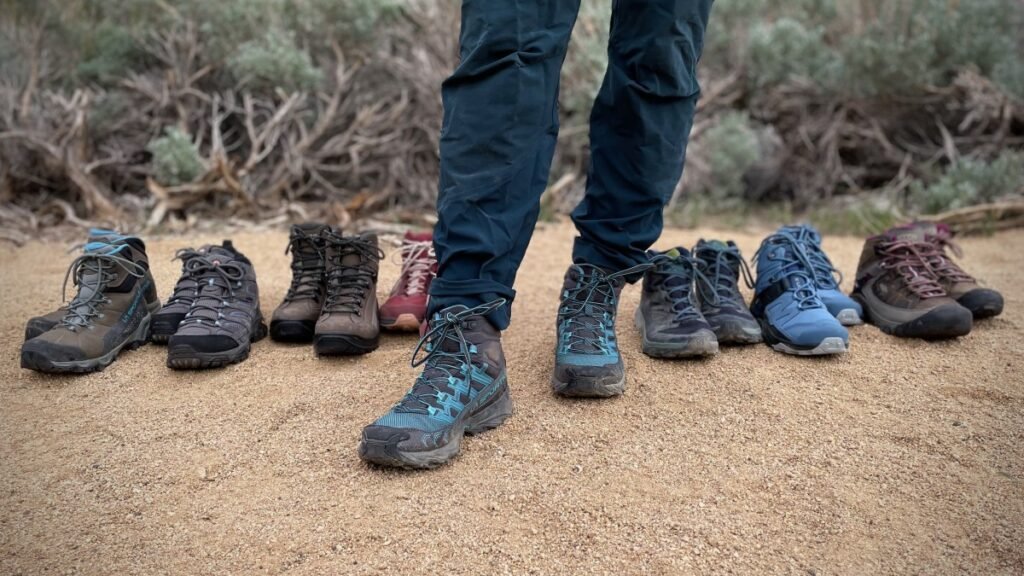Spending numerous hours on your feet requires boots that fit. Footwear that’s too small can keep you from having fun, whether you’re on a hike or a DIY walking city tour. Here’s a guide to help you find the best pair for your next adventure.
- Comfortable Fit
Consider brands with a reputation for providing wide-fit walking boots. Look at the range of styles they offer. It’s easier to find something that suits your needs if they have plenty of options. Check out the features of each pair, though. Some boots only have a wide fit around the big toes, making them the ideal choice if you have a slim foot with a bunion. It’s not for everyone, but if it’s the pair you need, you’ll find it an excellent buy.
- Range of Fittings
Some boots go from extra wide, wide, medium, narrow, and extra narrow fittings. If you’re unsure which size fits best, consider options with different widths. Explore sizes until you find what works.
Different Types
Look at the different types of wide-fit walking boots. You’ll find plenty of options, from ultralight pairs to walking boots made for hours of hillwalking. Consider your next trip. Do you love walking up hills regularly, or are you a seasonal walker? Do you love trekking for short distances or walking around? Do you walk every day? Your habits inform your buying decisions. If you’re a frequent walker, pick sturdy boots that can handle harsh conditions or long distances and will last for years. If you’re a seasonal walker, stylish, ultralight models seem perfect.
- Breathability
Is the model breathable? That matters if you walk for hours. You’ll have more fun if you don’t have to worry about getting sweaty feet. Improved comfort helps you tackle more miles. Also, better breathability helps prevent blisters and other foot issues, so find pairs that can keep your feet bone-dry.
- Waterproof
Look for waterproof options, too, so you can walk through puddles and mud without getting your feet wet. If it rained the day before or you encounter moist ground, you won’t need to worry about the moisture seeping through the material of your boots.
- Cushioned
Check out the supporting features. Not all boots have padded collars for ankle support. Toe and heel guards also make the model more durable. Is there a stabilising arch? Knowing what to look for when you shop for wide-fit walking boots will help you choose the best options for your walking adventures.
- Cut
Some boots are mid-cut and short, which improves breathability. Some are long boots and cover part of your shins. Consider your purchase based on the terrain. Will it involve walking on flat ground, or will you go through harsh trails? Will fashionable walking boots do, or do you need a durable outsole with excellent traction and other features, like a cushioned footbed?
- Colour
If you love colour and style, you’ll want to look for walking boots that reflect your taste. Many models come in pink or pink accents, making them an ideal choice for women. If you want footwear with a feminine touch, go beyond the usual black, blue, and grey. Bold colours also add to your visibility, which is always a good thing. - Sole
The sole of your boots should be designed to improve traction and stability. Pick pairs with soles made for the terrain you’ll be tackling. You can expect better traction on muddy trails with deep, lugged soles. Smoother soles work for rocky or hard-packed terrains. - Foot Health
Do you have plantar fasciitis? What about other foot issues, such as bunions, blisters, sweaty feet? Look for boots with features that address your health issues. Some buy models with extra cushioning, while others look for arch support or a supportive footbed. - Recommendations
If you walk regularly, are you part of a group? Do you walk with your friends? Is it a hobby? If you know a community of frequent walkers, ask for advice. Their experiences can point you in the right direction and help you determine which models have the features and support you need. - Practice
Take out your new pairs for a test run. Break in those boots, so they’ll be ready for your next hike or walk. Does it pinch anywhere? Did the fit improve? Do you wear light or thick socks? Don’t bring new boots to a long trek. You could end up with blisters, and that’s the last thing you want. - Clean and Reproof
Keep your boots clean after you use them. Wash off the dirt and mud to prevent grime buildup. Some use a toothbrush to scrub their boots Be gentle and don’t rub off the details. Tap water with specialised boot cleaning solutions will work. Stay away from cleaning solutions with harsh chemicals as they’ll only damage your boots. You can also reproof your boots to make them easier to clean. They’ll be in mint condition longer, saving you the cost of buying new pairs too soon.


